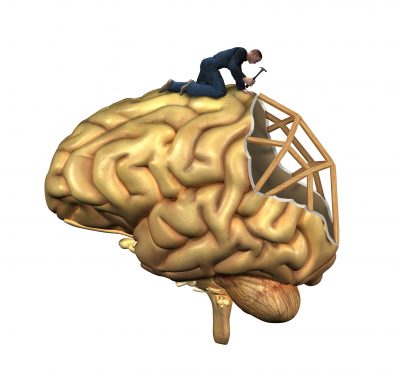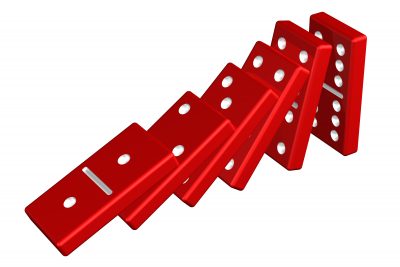 (Society for Neuroscience) The discovery that the human brain can produce new cells in adulthood offers just one example of how adaptable the brain is throughout life. With this knowledge, researchers are investigating how normal aging as well as neurodegenerative diseases like Alzheimer’s disease affect that adaptability, and how we can maintain healthy brain function as our brains age. So what is neuroplasticity?
(Society for Neuroscience) The discovery that the human brain can produce new cells in adulthood offers just one example of how adaptable the brain is throughout life. With this knowledge, researchers are investigating how normal aging as well as neurodegenerative diseases like Alzheimer’s disease affect that adaptability, and how we can maintain healthy brain function as our brains age. So what is neuroplasticity?
(Brainworksneurotherapy.com/uk)
Our brains are constantly being shaped by experience. Most of us have very different behaviours and thoughts today than we did 20 years ago. This shift is neuroplasticity in action; changes in brain structure and organisation as we experience, learn, and adapt.
With every repetition of a thought or emotion, we reinforce a neural pathway – and with each new thought, we begin to create a new way of being. These small changes, frequently enough repeated, lead to changes in how our brains work.
Neuroplasticity is the ‘muscle building’ part of the brain; the things we do often we become stronger, and what we don’t use fades away. That is the physical basis of why making a thought or action over and over again increases its power. Over time, it becomes automatic; a part of us. We literally become what we think and do.
Neuroplasticity is at work throughout life. Connections within the brain are constantly becoming stronger or weaker, depending on what is being used. Younger people change easily; their brains are very plastic. As we age change doesn’t come as easily; the brain loses some of its plasticity and we become more fixed in how we think, learn, and perceive.
Since the brain is pivotal to all we think and do, by harnessing neuroplasticity we can improve everything we do and think.
We know that exercise for the body is critical to maintaining bone and muscular structure, cardiovascular health and blood flow. Now we know these same benefits can be applied to the brain, and that “remolding” in our brain can take place with throughout life, even into “old” age. This science is opening new doors to exciting research and hope for keeping our brains healthy as we age, and even helping those with neurodegenerative conditions such a Alzheimer’s and Parkinson’s Disease.
Pam Brandon is President/Founder of AGE-u-cate® Training Institute, whose mission lies in creating transformative change in an aging world. AGE-u-cate’s newest partnership with Ageless Grace® – 21 Simple Tools for Lifelong Comfort and Ease™️ is their ongoing commitment to helping people of all ages with a groundbreaking body/brain fitness program.
www.AGEucate.com/Ageless Grace
 A survey form the National Council on Aging, UnitedHealthcare and USA Today concluded that most Boomers are optimistic about their future. That is until you ask them about needing help as they age. When it comes to the issues surrounding who will provide caregiving when they no longer are able, optimism turns to fear.
A survey form the National Council on Aging, UnitedHealthcare and USA Today concluded that most Boomers are optimistic about their future. That is until you ask them about needing help as they age. When it comes to the issues surrounding who will provide caregiving when they no longer are able, optimism turns to fear. The devastation we are witnessing in the wake of Hurricane Harvey is a reminder that we must all be prepared to care for a loved one, elderly or disabled neighbor or friend when disaster strikes. Here is a list of 6 basic yet vital precautions that everyone should have in place, especially in the event of a natural or manmade disaster:
The devastation we are witnessing in the wake of Hurricane Harvey is a reminder that we must all be prepared to care for a loved one, elderly or disabled neighbor or friend when disaster strikes. Here is a list of 6 basic yet vital precautions that everyone should have in place, especially in the event of a natural or manmade disaster: Families caring for aging adults have and will continue to reach unprecedented numbers affecting every corner of our society. We MUST address the complex needs of this population who are the foundation of long-term care nationwide, exceeding Medicaid long-term care spending in all states (National Alliance for Caregiving and Overcare, March 2009). Jo Horne, author of Caregiving: Helping an Aging Love One created the Caregiver’s Bill of Rights. These are powerful and impactful words of hope and guidance for each and every person caring for a family member or friend:
Families caring for aging adults have and will continue to reach unprecedented numbers affecting every corner of our society. We MUST address the complex needs of this population who are the foundation of long-term care nationwide, exceeding Medicaid long-term care spending in all states (National Alliance for Caregiving and Overcare, March 2009). Jo Horne, author of Caregiving: Helping an Aging Love One created the Caregiver’s Bill of Rights. These are powerful and impactful words of hope and guidance for each and every person caring for a family member or friend: